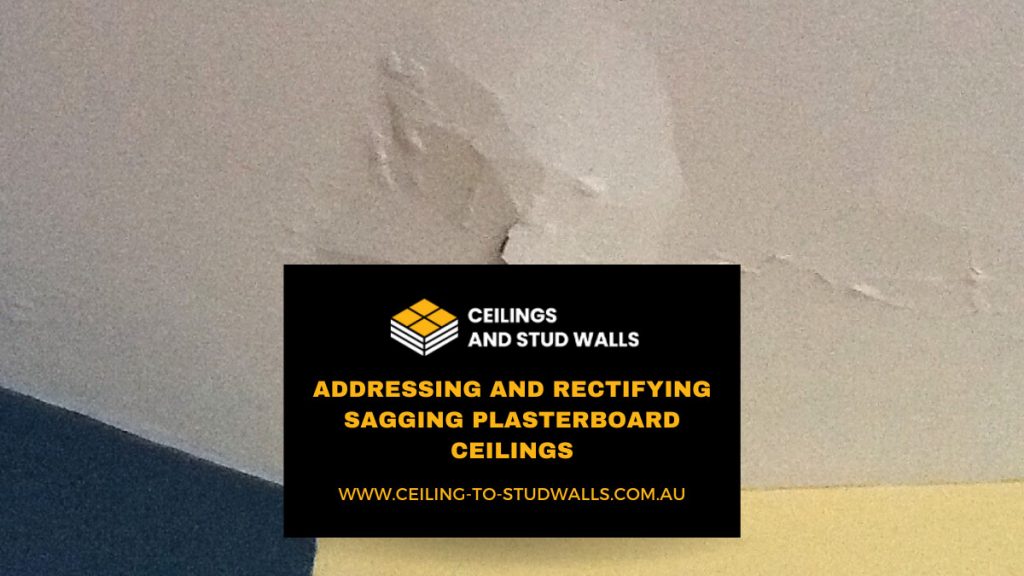
At Ceilings and Stud Walls, we understand the potential risks associated with neglecting a sagging plasterboard ceiling. Left unattended, such ceilings pose a threat of collapse, endangering occupants, and may result in rapid water damage, leading to costly repairs.
Identifying the root cause of a sagging plasterboard ceiling and enlisting the expertise of professionals like Ceilings and Stud Walls ensures a cost-effective solution to your concerns. Contact us to discover the top four reasons for sagging ceilings and the telltale signs to be vigilant about.
Common Causes of Sagging Plasterboard Ceilings
A sagging plasterboard ceiling not only diminishes aesthetics but can also be a safety hazard. Ignoring this issue can escalate into more expensive problems, such as water accumulation within the ceiling.
Timely attention to sagging ceilings can prevent these damages from worsening.
- Foundation and Structural Movement
Temperature changes can lead to structural and foundation movements, causing your ceiling to stretch, warp, crack, and sag. Addressing these movements promptly prevents further damage. - Roof Water Leaks
Mould buildup or water staining may signal a sagging plasterboard ceiling due to damaged roofing, allowing water to penetrate the insulation and reach the ceiling. Regular roof inspections can reveal areas prone to water entry. - Burst Pipes
Water damage without roof damage may indicate a burst pipe or leaking drain. Turning off your home’s water supply can help determine if the water damage ceases, identifying the root cause. - Termite Infestation
Termites can weaken timber structures, leading to ceiling cracks and sagging. A prompt professional inspection is crucial if you notice signs of termite presence or decimated timber. - Age
Aging buildings and ceilings experience natural wear, with fasteners and adhesives deteriorating over time. Cracks around cornices or sagging may result from this aging process. - Vibrations from Roller Doors
Frequent vibrations from motorised roller shutters and panel lift doors in garages can stress the ceiling, causing cracks, warping, or sagging. Misalignment of doors and windows may indicate structural or cosmetic damage.
Recognising a Collapsed Plasterboard Ceiling
Warning signs of an imminent collapsed plasterboard ceiling include:
- Fallen and damaged plasterboard
- Cracks with water leaks or mould
- Sagging with audible creaking
- Cracking sounds with visible cracks in corners
Prompt Plasterboard Ceiling Repairs
When you observe initial signs of sagging or cracks, it is crucial to address them promptly to ensure an effective resolution. For top-notch ceiling repairs in Perth Northern Suburbs, trust Ceilings and Stud Walls.
Our licensed professionals will assess your sagging plasterboard ceiling and provide a detailed quote for the necessary work. We guarantee cost-effective solutions using modern techniques and materials.
Ceiling Repair Options:
- Simple Repairs
- Cover-Up Job
- Total Ceiling Replacement
- Major Repairs
With our extensive experience, we can handle any ceiling issue efficiently. Don’t hesitate – reach out to us for all your ceiling needs, and we’ll restore your ceiling to its pristine condition in no time!
